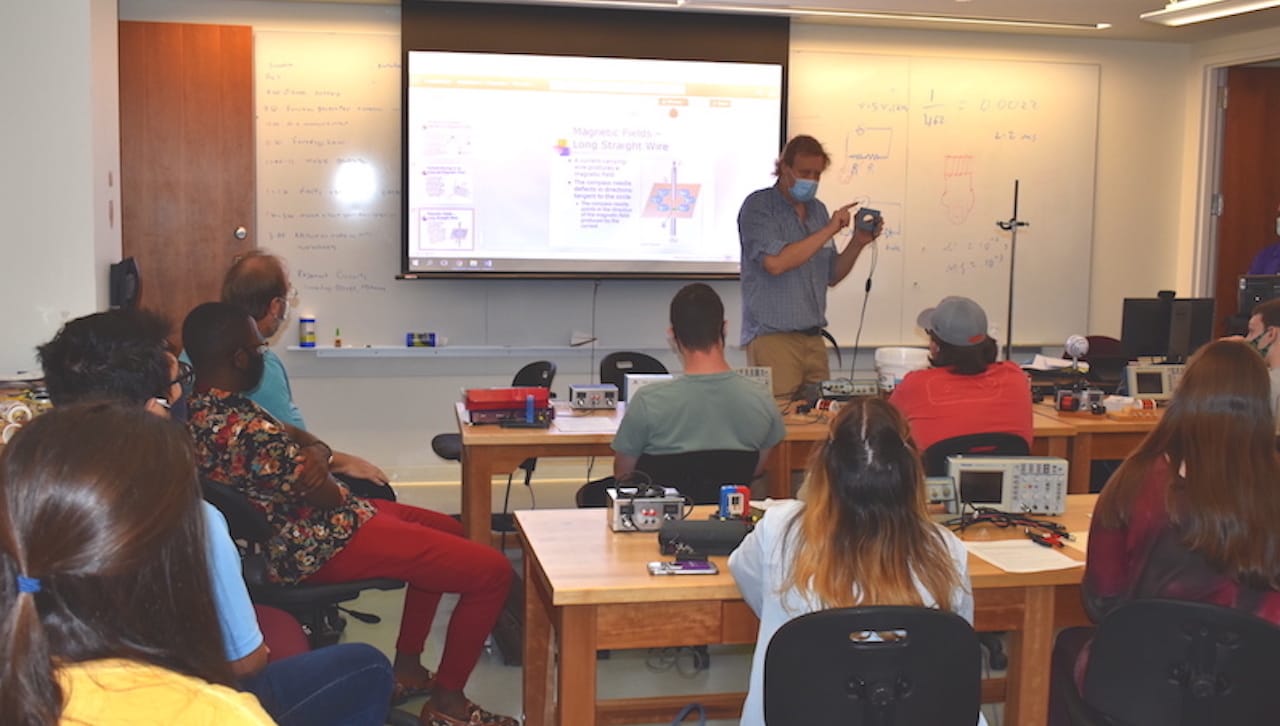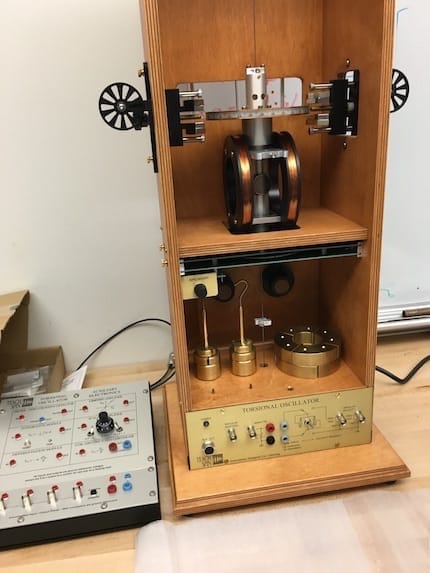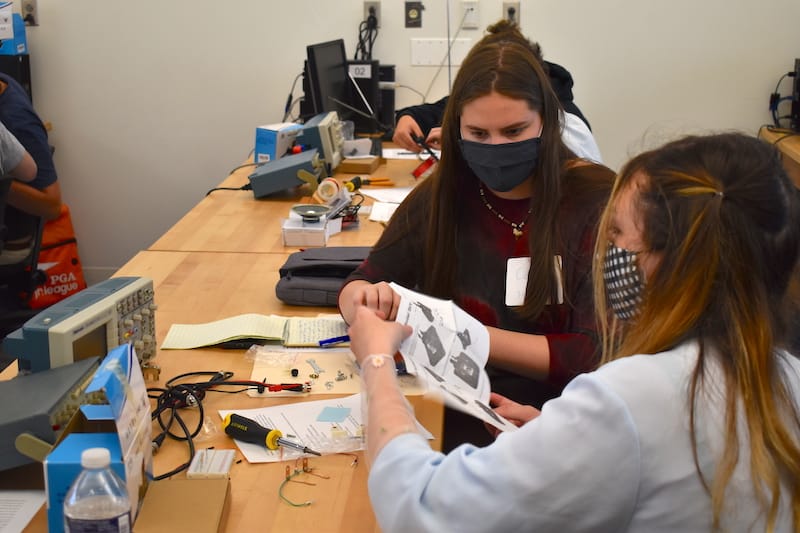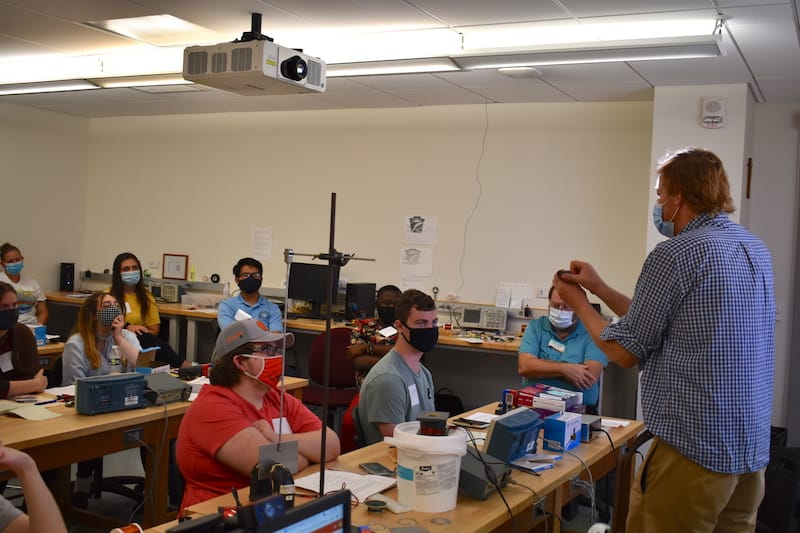University Holds Physics Summer Camp

High school students were introduced to the extraordinary world of physics at a summer camp hosted at The University of Scranton. The three-day camp for 9th and 10th grade high school students, taught by University physics faculty members, included mini-lectures and hands-on activities to introduce basic physics concepts of electricity and magnetism, as well as dramatic real-life examples of these principals in action.
At the camp, which took place July 19-21, 12 high school students learned about types of waves, oscilloscopes, magnetic coils, loudspeakers and software defined radio. They built a generator, a motor, and learned to use cutting edge Software Defined Radios (SDR). They installed and got to keep an actual SDR to use at home.
The students were also introduced to an array of much-in-demand careers available to physicists, or “supercharged engineers,” as the profession is described by Declan Mulhall, Ph.D., professor of physics and engineering at Scranton.
“Physicists have a depth of knowledge and training to give them a broad understanding of a subject and are able to apply their training to find solutions to complex problems and issues,” said Dr. Mulhall, who was among the faculty members leading the camp. “People always have to learn new technology to enter the workforce because of technological advances. Physics – and to some extent engineers – are the source of those advances, and we are training future physicists.”
According to the U.S. Bureau of Labor Statistics, the job outlook physicists and astronomers is projected to grow seven percent from 2019 to 2029, faster than the average for all occupations. The median annual wage for physicists was $129,850 in May 2020.
Dr. Mulhall said graduates earning a bachelor’s degree in physics work in a number of industries. Recent graduates of the University are working as industrial physicists at Collins Aerospace, optical systems designers at Thorlabs, as well as pursuing graduate studies in physics or astrophysics. “One student is working on cutting edge quantum computers at Michigan State University. She reports loving it,” he said.

Dr. Mulhall noted that University of Scranton students have access to a broad range of physics laboratory equipment, such as the torsional oscillator. The basic principles learned through experiments with this piece of equipment can be applied to all areas of physics where vibration happens, from how light goes through glass but not paper, to the design of bridges and skyscrapers.
The summer camp was offered free of charge to participants through support from the University’s Department of Physics and Engineering and a National Science Foundation grant.















